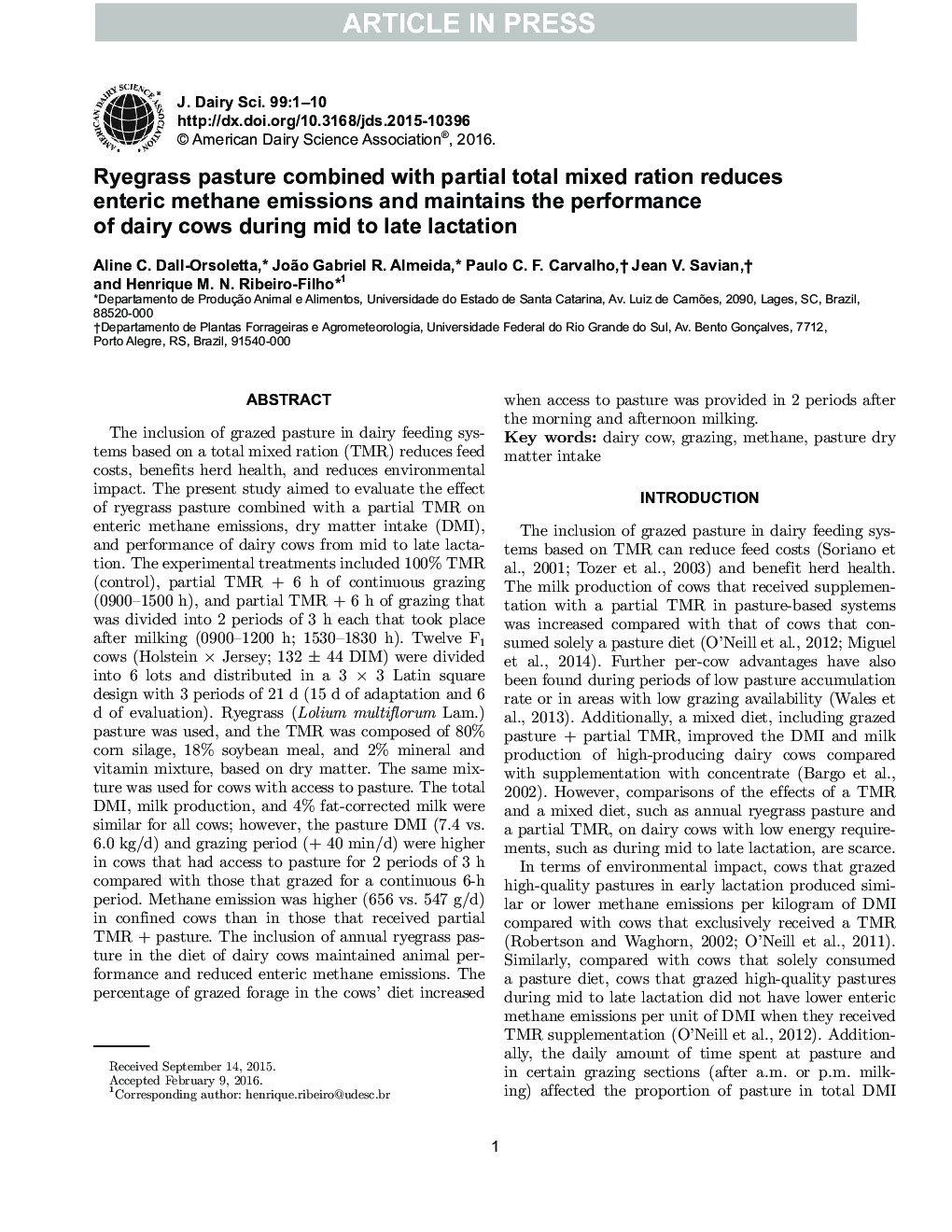| Article ID | Journal | Published Year | Pages | File Type |
|---|---|---|---|---|
| 10973303 | Journal of Dairy Science | 2016 | 10 Pages |
Abstract
The inclusion of grazed pasture in dairy feeding systems based on a total mixed ration (TMR) reduces feed costs, benefits herd health, and reduces environmental impact. The present study aimed to evaluate the effect of ryegrass pasture combined with a partial TMR on enteric methane emissions, dry matter intake (DMI), and performance of dairy cows from mid to late lactation. The experimental treatments included 100% TMR (control), partial TMR + 6 h of continuous grazing (0900-1500 h), and partial TMR + 6 h of grazing that was divided into 2 periods of 3 h each that took place after milking (0900-1200 h; 1530-1830 h). Twelve F1 cows (Holstein à Jersey; 132 ± 44 DIM) were divided into 6 lots and distributed in a 3 Ã 3 Latin square design with 3 periods of 21 d (15 d of adaptation and 6 d of evaluation). Ryegrass (Lolium multiflorum Lam.) pasture was used, and the TMR was composed of 80% corn silage, 18% soybean meal, and 2% mineral and vitamin mixture, based on dry matter. The same mixture was used for cows with access to pasture. The total DMI, milk production, and 4% fat-corrected milk were similar for all cows; however, the pasture DMI (7.4 vs. 6.0 kg/d) and grazing period (+ 40 min/d) were higher in cows that had access to pasture for 2 periods of 3 h compared with those that grazed for a continuous 6-h period. Methane emission was higher (656 vs. 547 g/d) in confined cows than in those that received partial TMR + pasture. The inclusion of annual ryegrass pasture in the diet of dairy cows maintained animal performance and reduced enteric methane emissions. The percentage of grazed forage in the cows' diet increased when access to pasture was provided in 2 periods after the morning and afternoon milking.
Related Topics
Life Sciences
Agricultural and Biological Sciences
Animal Science and Zoology
Authors
Aline C. Dall-Orsoletta, João Gabriel R. Almeida, Paulo C.F. Carvalho, Jean V. Savian, Henrique M.N. Ribeiro-Filho,
